In the constantly evolving field of artificial intelligence, Sam Altman’s abrupt departure from his leadership role at OpenAI has caused a commotion within the industry. Once praised as a trailblazer driving innovation in AI, Altman’s exit has revealed underlying flaws beneath the glamorous facade of Silicon Valley’s elite.
The board’s decision to cut ties with Altman points to deeper issues of transparency and governance at the organization. This unexpected turn of events not only raises questions about the direction of OpenAI but also has broader implications for the tech sector as a whole.
With the tech community buzzing and Mira Murati stepping up as the acting CEO, there is an urgent demand for insight and explanation behind the dramatic changes taking place at this influential institution.
Key Takeaways
In the dynamic world of AI innovation, OpenAI has experienced a tectonic shift with the unforeseen exit of CEO Sam Altman. This development, instigated by the board, has sparked a cascade of conjecture and a sense of unpredictability across the technology sector.
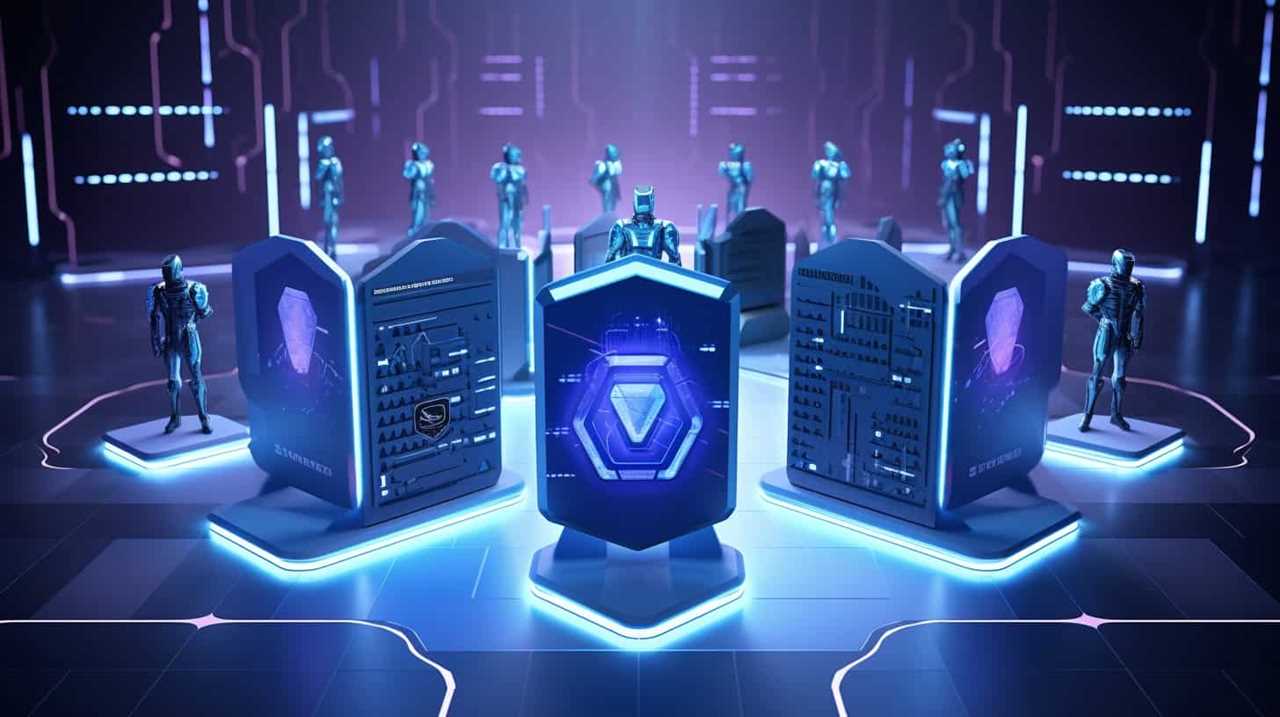
Attention has swiftly pivoted to Mira Murati, who assumes the role of interim chief at OpenAI amidst amplified demands for clarity and cogent planning. With Murati at the controls, her actions are under the industry’s microscope, with many predicting that her tenure may define the pivotal changes yet to unfold at OpenAI.
The Announcement Breaks
In the early hours of April 3rd, the technology sector was rocked by the revelation that Sam Altman was no longer at the helm of OpenAI. This unexpected turn of events sent shockwaves throughout the community, prompting industry analysts and shareholders to engage in an intense review of the company’s executive leadership. The decision by OpenAI’s board to sever ties with Altman highlighted deep-seated issues in communication, culminating in his departure.
With Mira Murati stepping up as the interim CEO, the market received a much-needed message of continuity, yet the urgency to secure a permanent leader for OpenAI’s forward trajectory was palpable. The mood among employees, caught between unease and anticipation, reflects the broader sentiment of curiosity about the company’s next chapter. On a larger scale, the industry’s response has been a whirlwind of surprise and conjecture, as insiders and enthusiasts alike try to decode the sudden shift in leadership.
This bold step by the board to usher in new leadership was more than a remedy to immediate problems; it was a strategic move to sculpt OpenAI’s long-term path. The implicit recognition was clear: OpenAI requires a leader who can foster open channels of communication and align closely with the board’s strategic outlook. The quest for Altman’s successor is now a hot topic, with the tech sphere closely monitoring OpenAI’s maneuvering through these uncharted waters.

Following the news of Altman’s exit, the discourse has expanded to consider the ramifications for the governance of artificial intelligence and the strategic moves of key tech players. As OpenAI remains an influential force in the evolution of AI, the quality of its forthcoming leadership is critical in sustaining its leading position in the arena of tech innovation.
Altman’s OpenAI Tenure
Sam Altman’s period at the helm of OpenAI, from the company’s founding in 2015 to his sudden departure, was a time of bold progress in artificial intelligence as well as increasing scrutiny of his leadership style. As the head of OpenAI, Altman was instrumental in advancing AI through initiatives such as the development of OpenAI’s language models, which have become benchmarks within the tech industry. Nevertheless, his leadership drew criticism for a perceived lack of openness and erratic communication, with the board ultimately expressing a lack of confidence in his direction.
During Altman’s leadership, OpenAI experienced both remarkable innovation and public disputes, a reflection of his strategic choices that catapulted the organization into the global spotlight. His stewardship undeniably positioned OpenAI as a frontrunner in the tech world, yet it also highlighted the firm’s struggles with ethical dilemmas and internal governance. Reports suggest that while the company culture was energetic and fast-paced, there were underlying strains of dissatisfaction among staff members concerning Altman’s management approach, which could have implications for staff morale and retention.
The unexpected exit of Altman has left the tech community pondering the future trajectory of OpenAI. The provisional management team is tasked with steering the company through this turbulent period, reassessing its strategic imperatives, and potentially shifting the organizational focus.

Below is a detailed analysis of the critical elements of Altman’s stewardship at OpenAI:
| Aspect | Insight | Impact on OpenAI |
|---|---|---|
| Altman’s Achievements | Led AI advancements, such as GPT series | Cemented OpenAI’s status as an innovation leader |
| Leadership Attributes | Forward-thinking but critiqued for lack of clarity | Resulted in diminished board confidence |
| Company Performance | Progressed AI tech, encountered ethical dilemmas | Expanded OpenAI’s prowess and controversy |
| Organizational Dynamics | Energetic yet potentially divisive environment | Could influence staff well-being and loyalty |
This table provides a succinct summary of the intricate legacy Altman has left, underscoring how his bold vision intersected with the tangible challenges of managing a pioneering AI enterprise.
Board Review Findings
The recent probe by the OpenAI board has unveiled numerous concerns regarding Altman’s stewardship, pinpointing a deficit in openness and erratic communication patterns, culminating in his ousting. The board review findings were pivotal in dissecting the internal mechanics that led to the tremors felt across the industry following Altman’s abrupt departure.
Central to the board’s apprehensions were:

- Transparency Deficit: Altman allegedly didn’t provide critical information in full, impairing the board’s decision-making capabilities.
- Leadership Dialogue: The examination shed light on instances where Altman’s dialogue diverged from the board’s anticipations, causing strategic and operational misalignments.
The critique of the leadership approach delved deeper, examining the subtleties of Altman’s methods and their impact on the wider company structure. Analysts postulate that these leadership blunders likely played a role in:
- Workforce Response:
- The absence of clear directives from leadership reportedly sparked confusion and discontent among employees, with a number airing their unease about the firm’s trajectory.
- Morale of the Staff: The unsettling waves of leadership indeterminacy have impacted staff morale, which may have enduring effects on productivity and ingenuity.
In the tech-forward enclaves of Silicon Valley, where the weight of governance is on par with that of innovation, the erosion of board confidence stands as a noteworthy occurrence. The board’s verdict showcases a commitment to maintaining governance excellence and broadcasts an unequivocal signal regarding the necessity for transparent and consistent leadership communication.
OpenAI’s realignment of its leadership could serve as a template for other burgeoning tech enterprises in navigating internal complexities and preserving the trust of stakeholders.
Transparency Issues Surface
The sudden departure of Sam Altman from the helm of OpenAI is attributed largely to a collapse in leadership communication, suggesting more profound issues of transparency at the top tiers of the organization.

The deteriorating relationship between the board and its now-former CEO has caused a stir within the technology sector, prompting discussions about the management structures of major AI entities.
As stakeholders insist on transparency, OpenAI is at a pivotal point where it needs to restore its reputation and define a clear, transparent strategy for the future.
Leadership Communication Breakdown
The opaque communication tactics of OpenAI’s former head have cast a spotlight on significant transparency deficits within the company, culminating in his unforeseen ousting. The breakdown of dialogue between the executive and the board has surfaced as a prime example of the leadership quandaries that undermined the trust of the governing body and, consequently, shaped staff sentiment. The undercurrents of unease swelled among the workforce as hushed conversations about the enigmatic details of Altman’s departure proliferated.
- Transparency Deficits:
- Obstructed the board’s execution of oversight responsibilities
- Prompted scrutiny over the organization’s guiding strategies
- Communication Breakdown:
- Forged a disconnect between the command echelon and team members
- Intensified uncertainties regarding the trajectory of OpenAI
These revelations prompt sector commentators to speculate on the potential ramifications of these internal affairs for OpenAI’s positioning in the rapidly shifting technological landscape.

Board Trust Eroded
Dwindling Confidence in OpenAI Leadership
As a Technology Journalist / Investigative Tech Reporter, it has been observed that a rift has formed between Sam Altman and the OpenAI board, with apparent transparency deficits at its core, signaling broader governance dilemmas. The board’s stance, stemming from apprehensions regarding Altman’s approach to leadership and communication, has caused ripples throughout the tech industry and led to a dip in staff morale. The breakdown in internal communication has exacerbated employee discontent, as the once-solid collective trust that propelled the organization’s culture of innovation appears to be waning.
| Concern | Impact |
|---|---|
| Transparency | Diminished board confidence, industry tremors |
| Leadership Approach | Decline in staff morale, internal discord |
| Employee Sentiments | Strained leadership dialogue, trust decline |
This narrative serves to illustrate the emotional impact of such corporate turmoil, pointing to a pivotal moment where a shortfall in transparency can destabilize even the most esteemed technology enterprises.
Leadership Style Critique
Amid escalating scrutiny, Sam Altman’s stewardship at the helm of OpenAI has drawn flak for a perceived deficiency in transparency and an inability to cultivate trust among the members of OpenAI’s governing body. This dissection of leadership methodologies has propagated through the organization, influencing a spectrum of operational and strategic components:
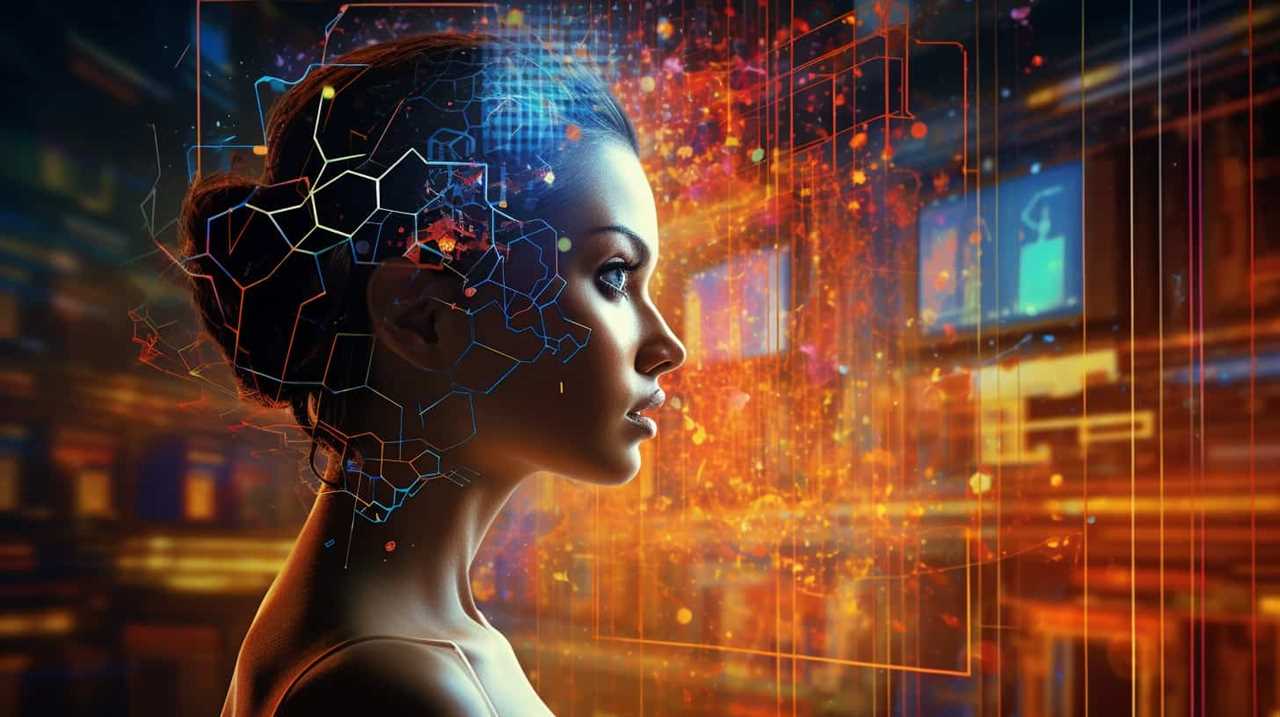
- Staff Dissidence and Morale Erosion:
- A sense of dissatisfaction has permeated the staff, stemming from an apparent obfuscation in how pivotal decisions are made.
- There’s a potential for waning morale as the workforce contends with an atmosphere of uncertainty and shifts in leadership.
- Internal Communication Analysis and Sector-wide Repercussions:
- Speculation is rampant regarding the possibility that Altman’s approach to communication might’ve inadvertently planted the seeds of skepticism.
- Competing entities are poised to revise their tactics, in anticipation of potential upheavals in the competitive terrain.
These developments carry significant implications for stakeholders, with investors, collaborators, and the wider AI sector watching with bated breath for OpenAI’s subsequent maneuvers. The quest to identify a successor for the CEO position introduces additional intricacy, as the board is tasked with selecting a figurehead who encapsulates OpenAI’s pioneering spirit while also instilling a renewed ethos in stewardship and dialogue.
With astute observation, it becomes clear that OpenAI’s quandary is reflective of a broader quandary within the tech sector: the quest to harmonize swift innovation with steadfast, transparent governance. Altman’s resignation has put a spotlight on the nuanced balance between executive independence and oversight, a conundrum that future leaders must navigate to maintain confidence and propel advancement.
As the tech realm comes to terms with the reverberations of Altman’s departure, the evolving narrative at OpenAI acts as a harbinger. It accentuates the critical need for leadership approaches that align with the principles and expectations of all parties engaged in the intensely competitive field of artificial intelligence.
Greg Brockman Steps Down
In the wake of recent events at OpenAI, the tech community has been closely monitoring the situation. The latest development is the stepping down of Greg Brockman from his position as Chairman. This move comes shortly after the departure of Sam Altman, leaving many to ponder the future direction of OpenAI’s leadership.

Brockman, however, will continue his involvement with the organization as president, indicating a strategic shift rather than a complete withdrawal.
As Chairman, Brockman was instrumental in guiding OpenAI’s vision and navigating the complex ethical landscape of AI research. His decision to relinquish this role points to a purposeful reorganization within OpenAI, possibly as a response to internal issues that were brought to light following Altman’s exit. These issues include a perceived opacity and erratic communication, which may have eroded the board’s trust in Altman’s leadership.
Now, with Mira Murati stepping up as the interim CEO, OpenAI is entering a crucial phase of transformation. This interim period is more than a simple placeholder; it represents a critical opportunity for OpenAI to re-evaluate its objectives, operational principles, and its approach to sharing its objectives with its internal teams and the global community.
As these changes unfold, their impact on the direction of AI research and policy worldwide is being watched with keen interest by those within the technology sector.

Mira Murati’s Interim Role
Mira Murati’s Interim Leadership at OpenAI
Mira Murati has stepped into the role of interim CEO at OpenAI, a crucial period for the organization as it deals with recent shifts in its executive ranks. Her appointment extends beyond a temporary fill; it’s a testament to her stability and proficiency. With a background as the previous CTO, Murati is well-equipped to steer OpenAI’s operations through these challenging times.
The board’s selection of Murati reflects her esteemed status in the tech world, a recognition of her technical expertise and visionary planning that was evident in the rollout of the much-acclaimed ChatGPT. She’s tasked with preserving the spirit of innovation that has become synonymous with OpenAI.
Murati’s interim tenure involves:
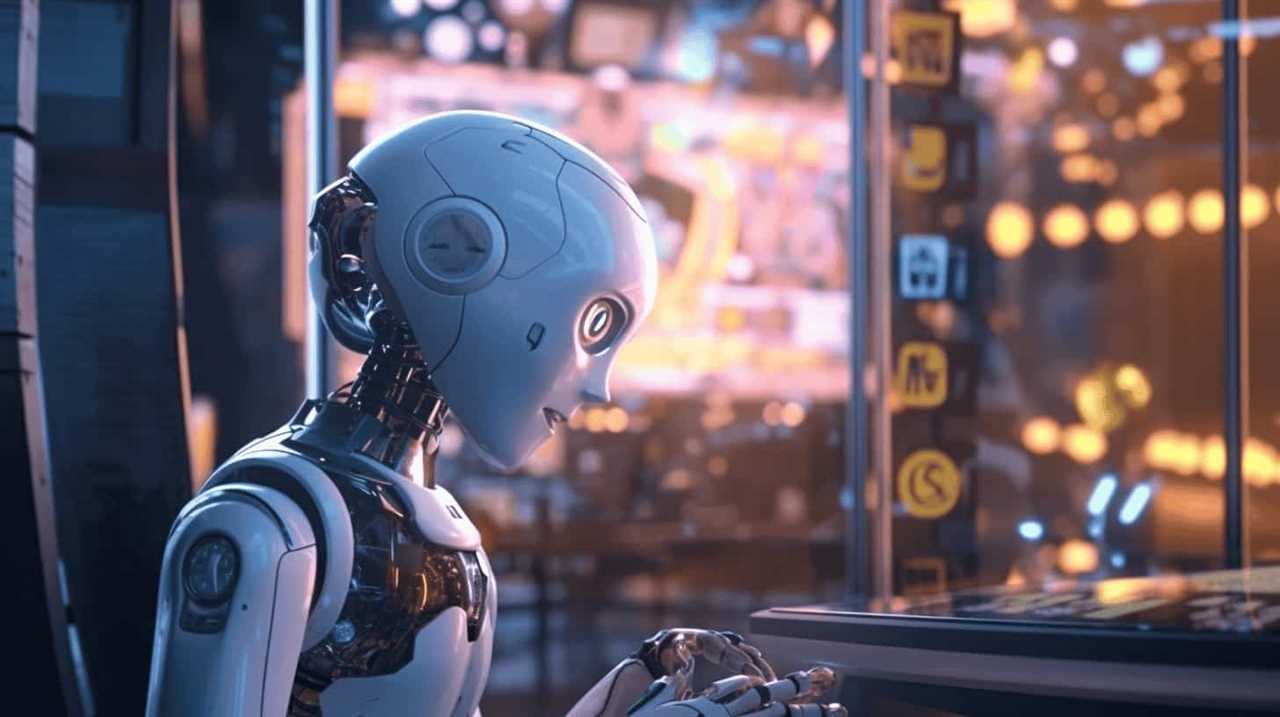
- Guiding the Transition
- Upholding the founding principles and aspirations of OpenAI
- Guaranteeing the uninterrupted progress of ongoing initiatives and research efforts
- Setting the Stage for What’s Next
- Managing the hunt for her eventual successor
- Crafting policies for the future direction of AI technologies
Murati’s assumption of the interim CEO role coincides with a period of intense examination of OpenAI’s strategic direction, especially in relation to Sam Altman’s exit. Her leadership is anticipated to serve as a crucial bridge from the organization’s past to its forthcoming era, all while maintaining a sharp focus on pioneering developments and corporate growth.
The tech community is closely monitoring how Murati handles these changes. The decisions she makes in the near term are set to influence OpenAI’s path forward, charting the company’s adaptation to these evolutionary times.
As OpenAI embarks on the quest for a permanent CEO, Murati’s impact remains pivotal in holding the company’s fabric together. The response of the employees is starting to surface as they witness the unfolding of a new chapter in OpenAI’s narrative.
Employee Reactions Emerge
Following the surprise departure of Sam Altman from OpenAI, reactions among the workforce have begun to manifest, suggesting a possible decline in employee morale. Those with knowledge of the situation suggest that the sudden shift in leadership might interfere with the flow of internal dialogue, leading to questions about the sustainability of ongoing projects and the overall strategic plan.

Employees well-versed in technology are assessing how this upheaval could influence OpenAI’s path of innovation and their individual contributions to the company.
Staff Morale Impact
In the wake of CEO Sam Altman’s abrupt departure from OpenAI, the organization is grappling with significant staff unease, leading to an observable dip in morale. Sources close to the situation have detailed the internal response in private forums and industry circles:
- The tech sector is reeling from the news, with a wave of speculation regarding the implications of a potential leadership void.
- The list of possible successors is met with an air of cautious optimism and a measure of doubt.
Stakeholder concerns are surfacing:
- Questions are swirling around the board’s decision-making transparency.
- Among the OpenAI team, there are shared apprehensions about the firm’s long-term strategic direction.
The prevailing uncertainty at OpenAI has prompted a critical examination of the company’s path forward, with insiders and market watchers eager for definitive information. This shift to a focus on internal communication speculations comes as a natural response to a workforce and an industry in search of stability and answers.

Internal Communication Speculations
Amidst the swirling uncertainty triggered by Sam Altman’s abrupt departure, OpenAI’s workforce is expressing trepidation, with internal conversations revealing a spectrum of concern and conjecture about the future of the organization’s communications approach.
The leadership vacuum has sparked anxiety over staff morale and incited vigorous discussion about the potential repercussions for the tech sector. The absence of a transparent succession plan is intensifying fears over a potential lapse in communication channels.
With governance worries peaking, stakeholders are eagerly anticipating a comprehensive account of the situation. Calls for transparency from within OpenAI are growing louder as employees seek clarity on the strategic direction in the wake of this unexpected turn of events.
Meanwhile, the broader stakeholder community is exhibiting a complicated blend of support, bewilderment, and anticipation, all awaiting the firm’s response to this evolving story.

Industry Shockwaves Felt
News of Sam Altman’s unexpected dismissal from the helm of OpenAI has sent shockwaves across the technology sector, prompting a wave of speculation and debate amongst industry experts and enthusiasts alike. The swift nature of the transition has caught many off guard, sparking a diverse range of reactions from admiration for Altman’s forward-thinking contributions to skepticism about the reasons and timing of the change in leadership.
In the tech circles, the atmosphere is one of both astonishment and curiosity, with industry insiders and analysts eagerly contributing their insights. Within the walls of OpenAI, the workforce appears to be experiencing a mix of confusion and hopeful anticipation, with employees eager to see whether new opportunities for strategic innovation will emerge. The undercurrents of uncertainty regarding Altman’s sudden exit are prompting wider discussions about the firm’s commitment to transparency and responsible governance.
Investors and key stakeholders are zeroing in on two critical concerns:
- The potential impact on OpenAI’s position as a frontrunner in the highly competitive field of artificial intelligence innovation.
- The necessity for OpenAI to remain true to its original ethical tenets despite the recent turbulence at the top.
To encapsulate the primary points of contention stirring the industry, here’s a detailed breakdown:

- Leadership Transition
Questions are being raised about how Mira Murati, stepping in as interim CEO, will navigate OpenAI’s strategic objectives. There’s an ongoing debate around whether OpenAI can sustain its rapid pace of AI breakthroughs. - Company’s Direction and Future Leadership
The industry is abuzz with conjecture regarding the repercussions of Altman’s exit on forthcoming initiatives and alliances. Pundits are pondering the extent to which OpenAI’s executive shuffle will reverberate through the larger AI domain.
In these moments of flux, the tech community is on high alert, keenly awaiting further developments that will undoubtedly influence the path of AI innovation and the ethical frameworks guiding the sector.
OpenAI’s Future Path
OpenAI’s roadmap now hinges on the leadership of interim CEO Mira Murati, as she steers the company through uncharted waters following Altman’s ousting. At the forefront of Murati’s agenda will likely be redefining OpenAI’s strategy to reassure stakeholders and maintain market competition. The leadership transition process must be seamless to prevent disruptions in the company’s vision and operations.
Murati’s immediate task is to enhance employee engagement, ensuring the team remains motivated and aligned with the company’s goals. She’ll also have to navigate stakeholder concerns, balancing the need for transparency with the strategic discretion required to edge out competitors.
The industry implications of OpenAI’s management shake-up are profound, and Murati’s decisions in the coming months will shape the AI landscape. Recognizing future growth opportunities without losing sight of the company’s ethos is a delicate task that demands a strategic, forward-thinking approach.

To illustrate the complexity of OpenAI’s situation and the factors at play, consider the following table:
| Key Focus Area | Description |
|---|---|
| Leadership Transition Process | Ensuring a smooth change in leadership to maintain stability and confidence within the company. |
| Employee Engagement | Keeping talent motivated and focused on innovation during times of internal upheaval. |
| Market Competition | Staying ahead in a rapidly evolving AI landscape, where rivals are eager to capitalize on any misstep. |
| Stakeholder Concerns | Addressing the expectations and worries of investors, partners, and the broader tech community. |
Murati’s tech-savvy and analytical mindset must now translate into tangible results that secure OpenAI’s position as an AI leader while setting the stage for its next chapter of growth and innovation.
Competitive Landscape Shifts
As a Technology Journalist / Investigative Tech Reporter, every action taken by Mira Murati garners intense scrutiny. Industry observers are gauging the impact of OpenAI’s leadership shift on its market standing in a fiercely competitive AI industry. Analysts are on alert for any strategic realignments and the broader implications of such a prominent change in executive command.
Organizational Direction:

- Leadership Transition Strategy: Murati’s interim stewardship is critical to sustaining OpenAI’s momentum, ensuring a transition that bolsters stakeholder trust and organizational resilience.
- Talent Stability: Central to OpenAI’s continued innovation is its ability to retain its intellectual core during this period of flux, averting a talent exodus to its rivals.
Strategic Decision Making:
- Investor Scrutiny: Investors are attentively monitoring the unfolding events, evaluating the repercussions for their financial interests and OpenAI’s future strategic endeavors.
- Competitive Edge: OpenAI is tasked with managing this pivotal transition without ceding its leading position in the AI sector, especially in the face of well-resourced adversaries like DeepMind and the rise of new contenders.
Following Sam Altman’s exit, Murati’s approach to enacting a decisive leadership transition strategy is put under the journalistic lens. Investor anxiety has been stoked, with calls for assurances that their investments remain protected and that OpenAI will continue to assert, or even advance, its competitive stance. The capacity for strategic decision-making will now scrutinize Murati’s leadership in steering OpenAI’s organizational direction in line with stakeholder aspirations and the dynamic requirements of the evolving marketplace.
Furthermore, the significance of talent retention is magnified. OpenAI’s trailblazing trajectory has consistently relied upon its magnetism for exceptional talent. Any internal instability might trigger organizational tremors, potentially granting rival firms the opportunity to lure away pivotal team members.
The tenure of Murati as OpenAI’s figurehead will be a defining period, not solely for the company but also for shaping the competitive landscape of the AI industry at large.
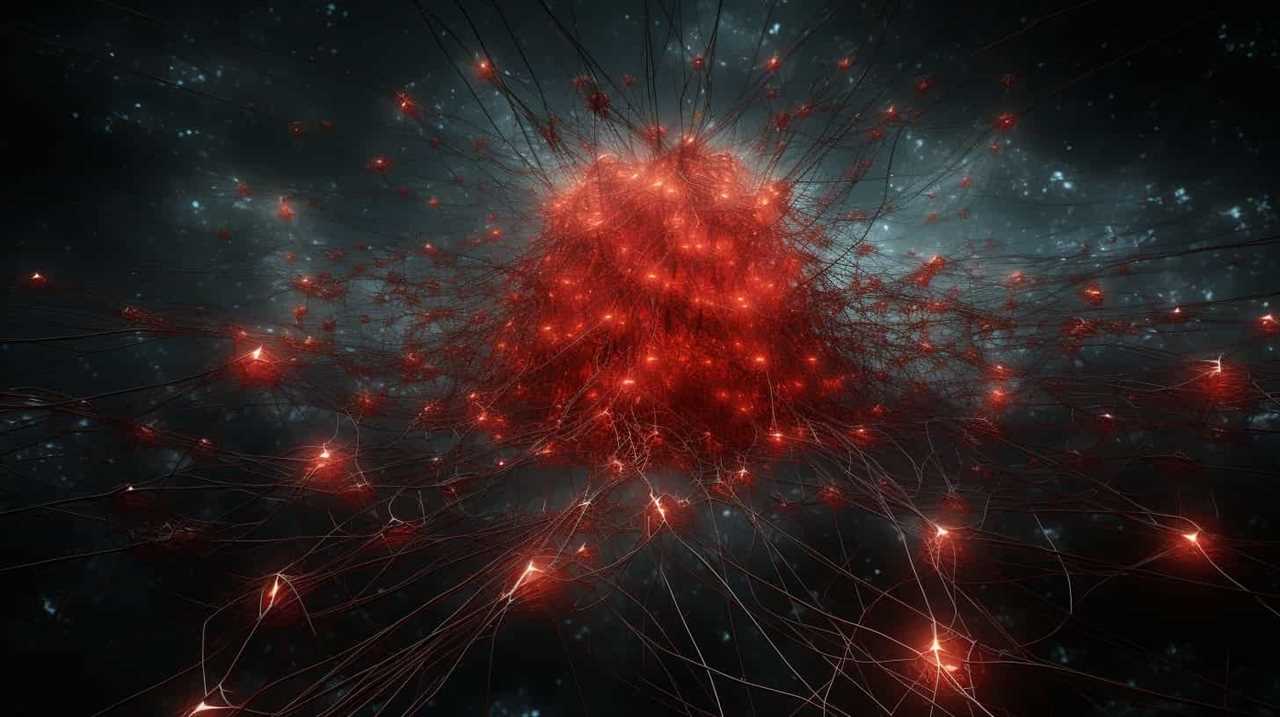
Stakeholder Implications
Amid the whirlwind of OpenAI’s executive shuffle, investors and employees are left grappling with the fallout of Sam Altman’s unforeseen exit. The ripple effect of this leadership vacillation is palpable, thrusting stakeholder interests into the limelight. Queries abound regarding the new trajectory OpenAI might chart under its emergent leadership.
The appointment of Mira Murati as the interim CEO has captured the attention of the tech community, marking a critical juncture for OpenAI. This momentous shift holds the potential to influence not only the company’s succession plan but also its future course. Murati now bears the hefty responsibility of sustaining employee morale amidst these tumultuous times. Indeed, fostering a stable work atmosphere is paramount to foster innovation and efficient operational execution, particularly when the company’s public image teeters precariously during such a high-profile transition.
The scrutiny over OpenAI’s reputation has far-reaching consequences, especially concerning its business alliances. Current partners may seek affirmations of OpenAI’s dedication to their shared objectives, while potential associates might opt for a cautious ‘wait-and-see’ stance, closely monitoring the company’s stability in the post-Altman era. In this environment, where heightened vigilance prevails, every maneuver by OpenAI will undergo meticulous analysis, seeking indications of either strategic steadfastness or shift.
In the grand scheme, the ramifications of Altman’s departure will echo well beyond the initial tremors. These waves will permeate the very ethos of OpenAI, sway investor sentiment, and recalibrate both customer and partner expectations. The manner in which OpenAI steers through this leadership metamorphosis will undoubtedly become a benchmark for change management at the nexus of high-stakes tech innovation.

Tech Community Speculations
The technology sector is rife with speculation regarding the implications of Sam Altman’s departure from OpenAI. This has incited discussions about a possible leadership void at the forefront of artificial intelligence innovation. Industry experts are deliberating the repercussions of this organizational upheaval. They are pondering whether it will hinder OpenAI’s trailblazing research or mark a calculated redirection of its strategic objectives.
As conjecture intensifies, attention gravitates towards the candidates in line to succeed Altman. The tech community is anticipating that the forthcoming CEO will need to exhibit an extraordinary synthesis of technical expertise and forward-thinking leadership. This is necessary to navigate OpenAI through the complexities of emerging AI frontiers.
Leadership Crisis Impact
The tech sphere is abuzz with conjecture as key figures debate the possible repercussions of Sam Altman’s sudden departure as CEO of OpenAI.
At the heart of the conversation is the leadership crisis impact, marked by:

- A spectrum of employee reactions has surfaced, from perplexity to apprehension.
- The effect on staff morale is a pivotal concern, with potential implications for productivity.
- The industry is experiencing reverberations, ushering in a phase of unpredictability.
- As the competitive environment adjusts, adversaries are assessing prospects in the midst of the disruption.
The ramifications for stakeholders are extensive, with many feeling uneasy about the future course of OpenAI. The quest for a stable leadership figure is underway, with scrutiny already cast on prospective CEO candidates.
Eyes are set on potential front-runners with acute anticipation, as observers look for hints on who might navigate the organization through these tumultuous times.
Future CEO Candidates
As OpenAI commences its high-profile hunt for a new CEO, the tech world buzzes with conjecture and lofty expectations. My focus as a Technology Journalist / Investigative Tech Reporter intensifies on the unfolding drama of potential CEO appointments, a saga that has captured the tech community’s fervent anticipation.
OpenAI stands at a crucial juncture, with its executive shuffle becoming a hotbed of industry commentary. It’s imperative that their strategy for appointing a successor resonates with the company’s trailblazing ethos.
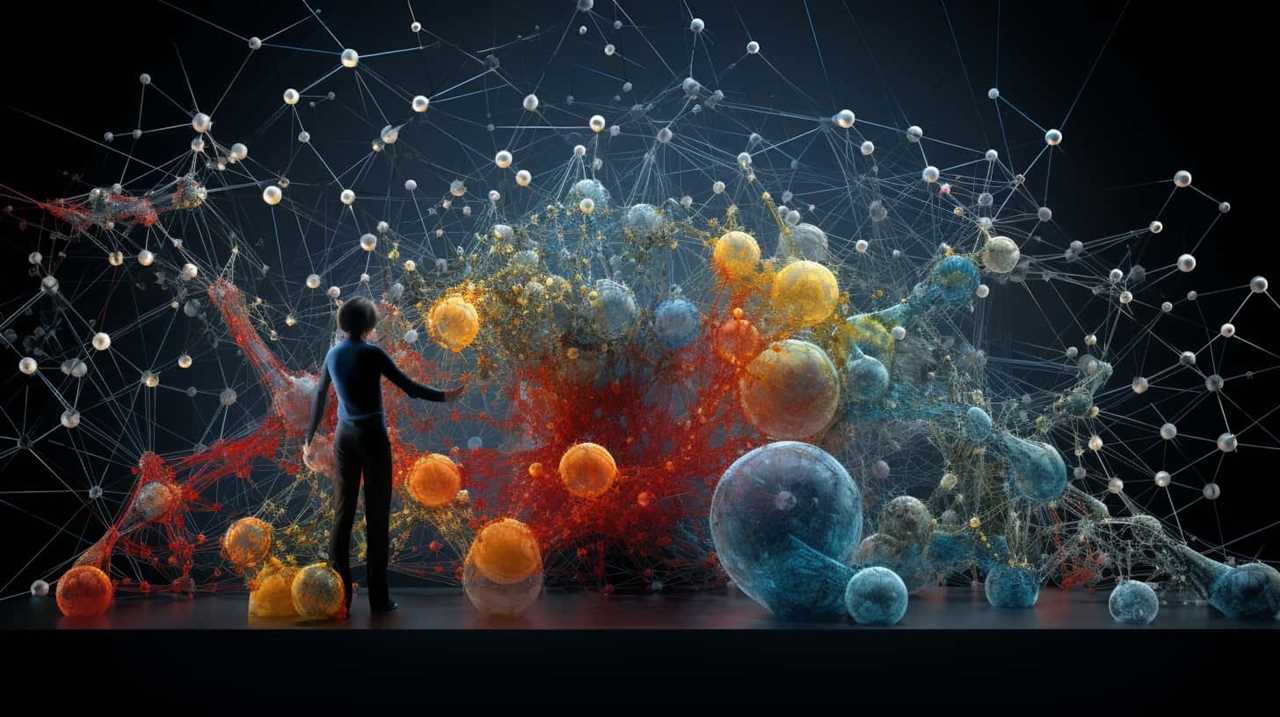
Through the lens of investigative reporting, I dissect the period of flux, scrutinizing the qualifications of each speculated candidate. The tech community watches with bated breath, assessing the capacity of these individuals to navigate OpenAI through its next chapter. The incoming CEO will shoulder the responsibility of sustaining the company’s legacy of innovation—a daunting prospect that only amplifies the suspense ahead of the impending executive revelation.
As we anticipate the transition, the spotlight remains on those in the running for this critical leadership position.
Potential Successors Eyed
OpenAI’s leadership is reportedly vetting a list of prominent technology figures to take over Sam Altman’s role at the helm. This key decision has become the centerpiece of conversations within the organization, with numerous employees watching for clues about OpenAI’s strategic course. Altman’s unexpected exit has stirred a spectrum of staff emotions, from unease to eagerness. The board is now especially attentive to team sentiment, striving to preserve a sense of steadiness by ensuring transparent communication.
Altman’s departure has sent ripples through the tech sector, sparking dialogues about the implications for the competitive field and the repercussions for stakeholders, with investors and business allies on the edge of their seats anticipating the declaration of a new chief. The buzz within the tech circles, with experts and insiders conjecturing what skills and knowledge the upcoming OpenAI leader will need to successfully steer the organization’s path amidst its challenges and prospects.
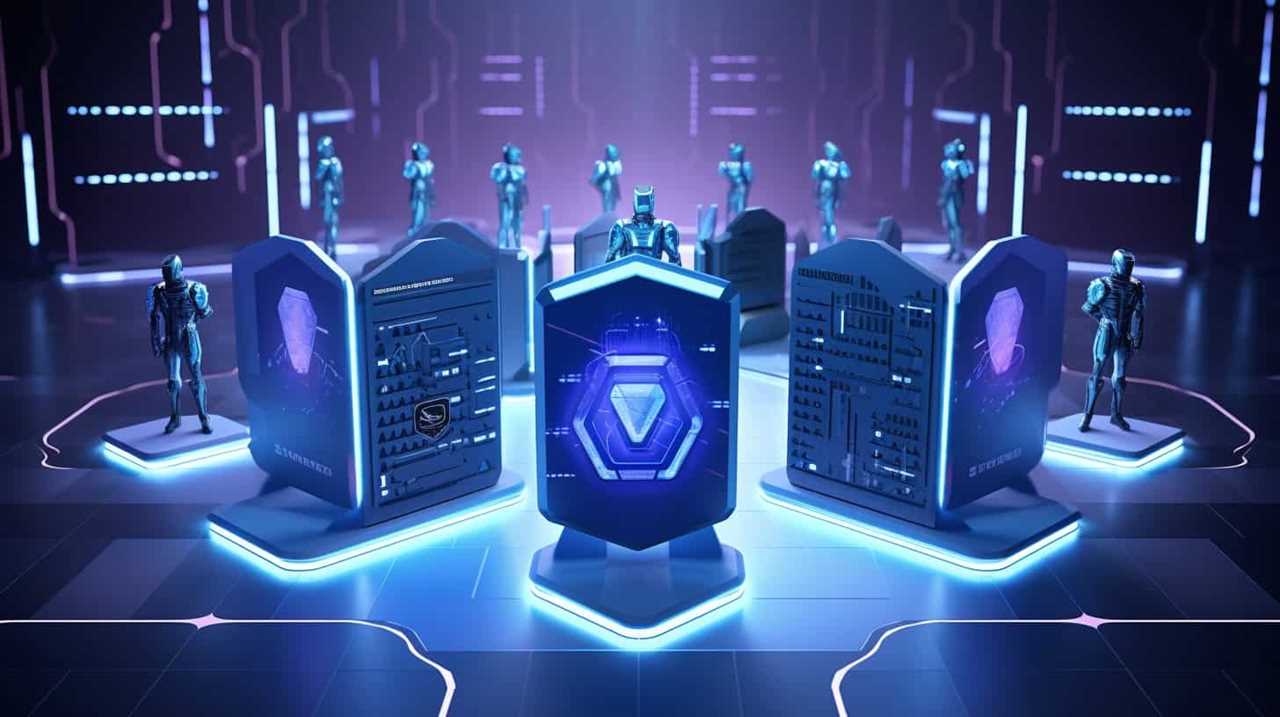
As these developments unfold, the board’s discussions aren’t just focused on identifying the right executive; they also aim to broadcast a signal that underscores their dedication to the core principles and long-term goals of OpenAI. The appointment of the new CEO is poised to influence the organization’s direction and potentially redefine its influence in a world increasingly shaped by artificial intelligence.
With the leadership seat freshly vacated, the tech community is ripe with forecasts and commentary, recognizing that the appointee will guide OpenAI through a new chapter filled with ethical dilemmas, industry demands, and the swift pace of technological advancement. For the board, selecting a new leader is a profound choice that will send a powerful message to Silicon Valley and the wider tech world.
OpenAI’s Governance Questions
The sudden departure of Sam Altman from OpenAI has cast a spotlight on the company’s governance structures, prompting the tech community to probe the internal decision-making and oversight that led to such an unanticipated leadership shake-up. The veil of privacy surrounding the board’s decision-making has been lifted, as industry analysts and the media delve into the circumstances surrounding Altman’s exit.
The repercussions of this leadership upheaval on OpenAI’s culture are significant, with potential implications for employee morale and the organization’s drive toward its lofty objectives. The tech industry and general public are now keenly observing the situation, seeking clues as to whether this development points to underlying issues in OpenAI’s governance framework.
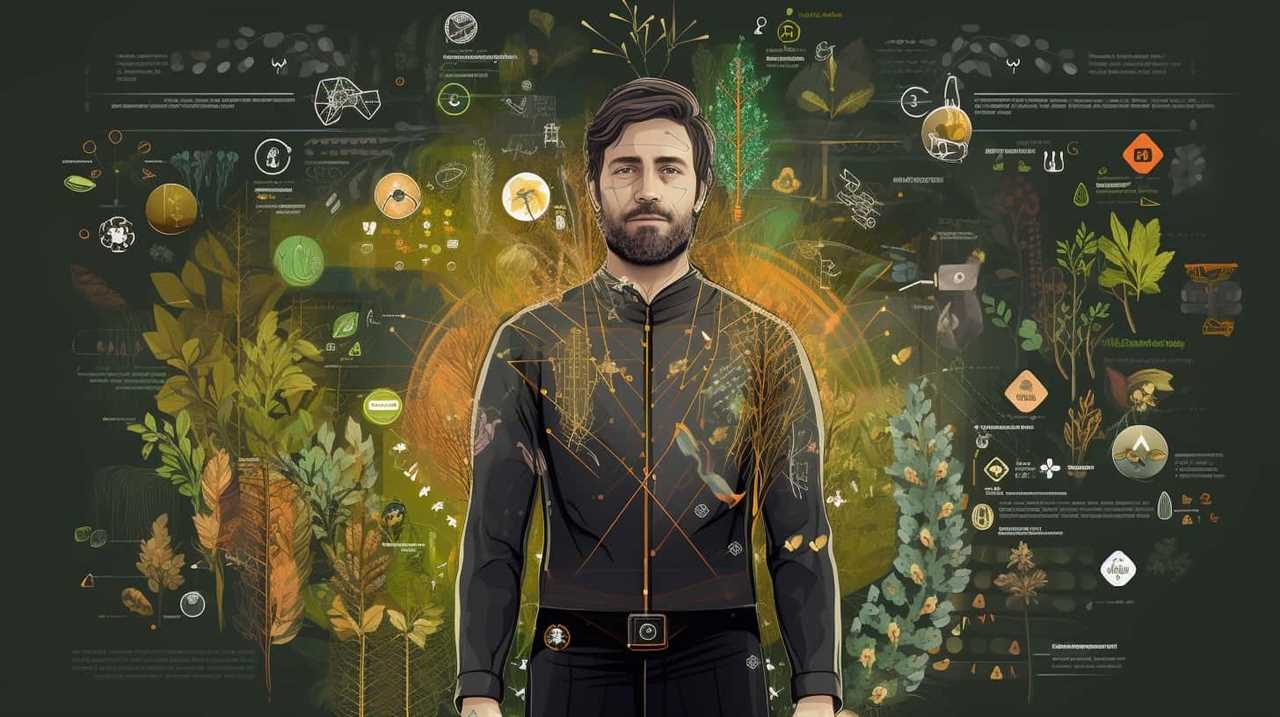
In the aftermath of Altman’s exit, the ramifications for OpenAI’s business relationships are also being closely watched. Partners and investors are re-evaluating their positions and forward-looking strategies in light of the leadership transition, pondering how this could affect OpenAI’s adherence to existing commitments and its willingness to embark on new initiatives.
Amidst widespread conjecture about OpenAI’s strategic future, Mira Murati has stepped in as interim CEO. However, the selection process for a permanent successor will be critical. The next CEO of OpenAI will need to be more than just a technological visionary; they must be adept at managing the intricate governance framework that’s essential for fostering innovation while upholding trust and integrity. The board’s next moves will be instrumental in determining OpenAI’s trajectory and reestablishing stability during a period marked by notable turbulence.
Frequently Asked Questions
Why Was Sam Altman Removed From Openai?
Amidst swirling controversies and boardroom debates, Sam Altman has been ousted from his position at the helm of OpenAI. This seismic shift in leadership has sent ripples through the tech sphere, prompting an investigation into the underlying reasons for the sudden departure.
Sources close to the matter hint at profound disagreements on strategic direction and a brewing cultural discord within the AI powerhouse. As Mira Murati steps into the spotlight, the tech community watches intently, pondering what this executive upheaval portends for the future of OpenAI’s groundbreaking endeavors.

When Did Sam Altman Dropout?
In 2005, Sam Altman made the pivotal decision to leave college behind, opting instead to dive headlong into the world of entrepreneurship. This move, while eschewing the conventional route of higher education, didn’t impede his ascent in the tech sphere.
As a technology journalist, it’s noteworthy to observe that Altman emerged as a formidable figure in the industry, demonstrating that in the dynamic environment of Silicon Valley, practical experience often carries as much, if not more, weight than traditional academic achievement. His path has become emblematic of a broader pattern among tech luminaries, who seem to value the lessons learned through hands-on innovation above the laurels of academia.
Who Is the CEO of Greylock Openai?
There is no CEO of Greylock OpenAI because such an organization doesn’t exist.
However, Greylock Partners is a significant force in venture capital, guiding technological advancement with investments that consider the ethical implications of AI.

While not directly in control of OpenAI, Greylock Partners’ strategic decisions and leadership significantly shape the AI industry.
Analysts predict that Greylock will remain an influential entity in the development of future technology, exerting a substantial yet nuanced impact.
In-depth reporting is crucial for anyone monitoring the influence of venture capital in the progression of technology.
Conclusion
In the rapidly evolving landscape of artificial intelligence, a seismic shift has occurred at OpenAI with the unexpected departure of CEO Sam Altman. This move, prompted by the organization’s board, has unleashed a wave of speculation and uncertainty within the tech community.

The spotlight now turns to Mira Murati, who steps in as OpenAI’s interim leader amidst heightened calls for transparency and strategic direction. As Murati takes the helm, the tech industry is poised to scrutinize every move, anticipating that her stewardship could be the crucible from which OpenAI’s future transformations emerge.









